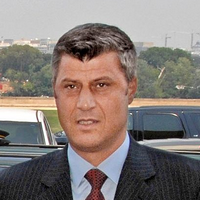The latest crisis in Kosovo, which erupted in late-July, seems to be abating after a NATO-brokered deal between Belgrade and Pristina. However, the incident focused attention on the region's most-recent frozen conflict: Kosovo's north.
The crisis followed the decision of the government in Pristina to impose a trade ban on goods from Serbia, in belated retaliation for Serbia's 2008 ban on imports from Kosovo after its declaration of independence. Serbia does not recognize Kosovo's independence and still considers it to be an integral part of its territory. Most of the international community, under U.S. leadership, has recognized Kosovo as an independent country, including 22 of the 27 member states of the European Union.
The latest move was initially interpreted as an attempt by Kosovan Prime Minister Hashim Thaci to change the situation on the ground in order to improve his government's negotiation position in ongoing "technical" talks between Kosovo and Serbia, which also include customs issues. Earlier in July, little progress was achieved in the EU-mediated discussions.

